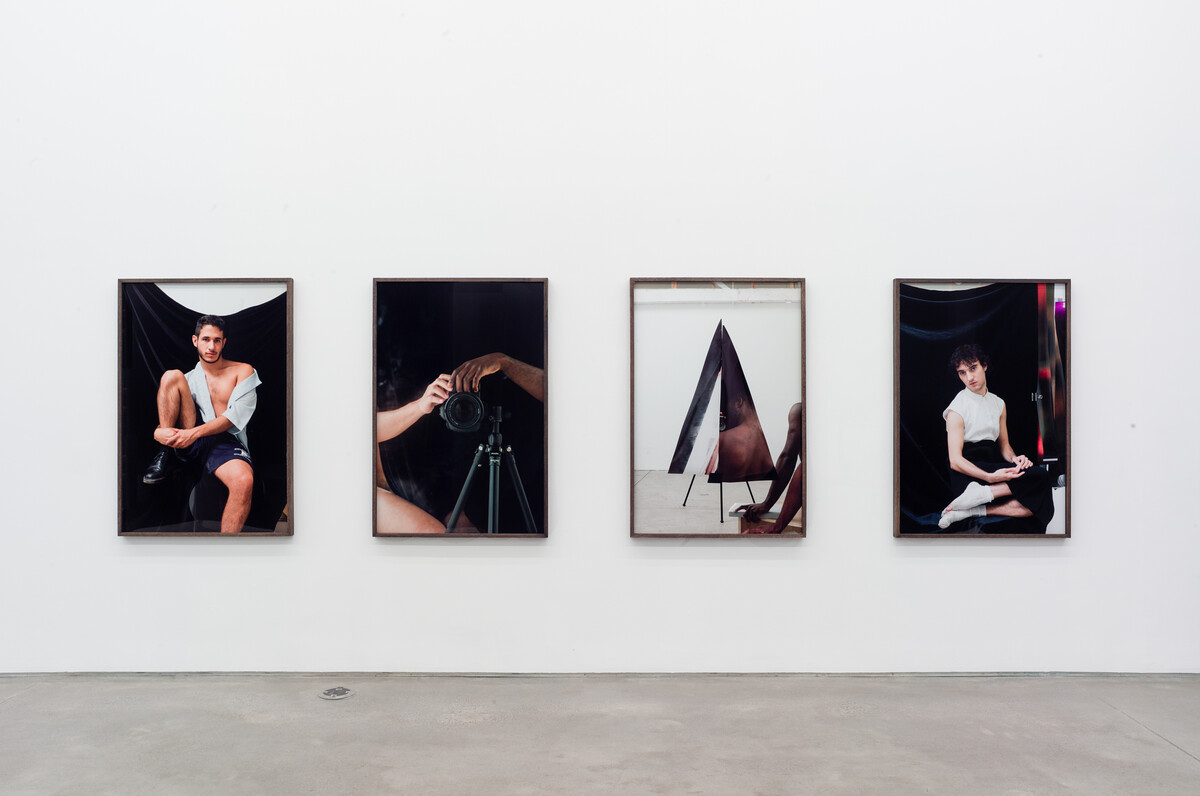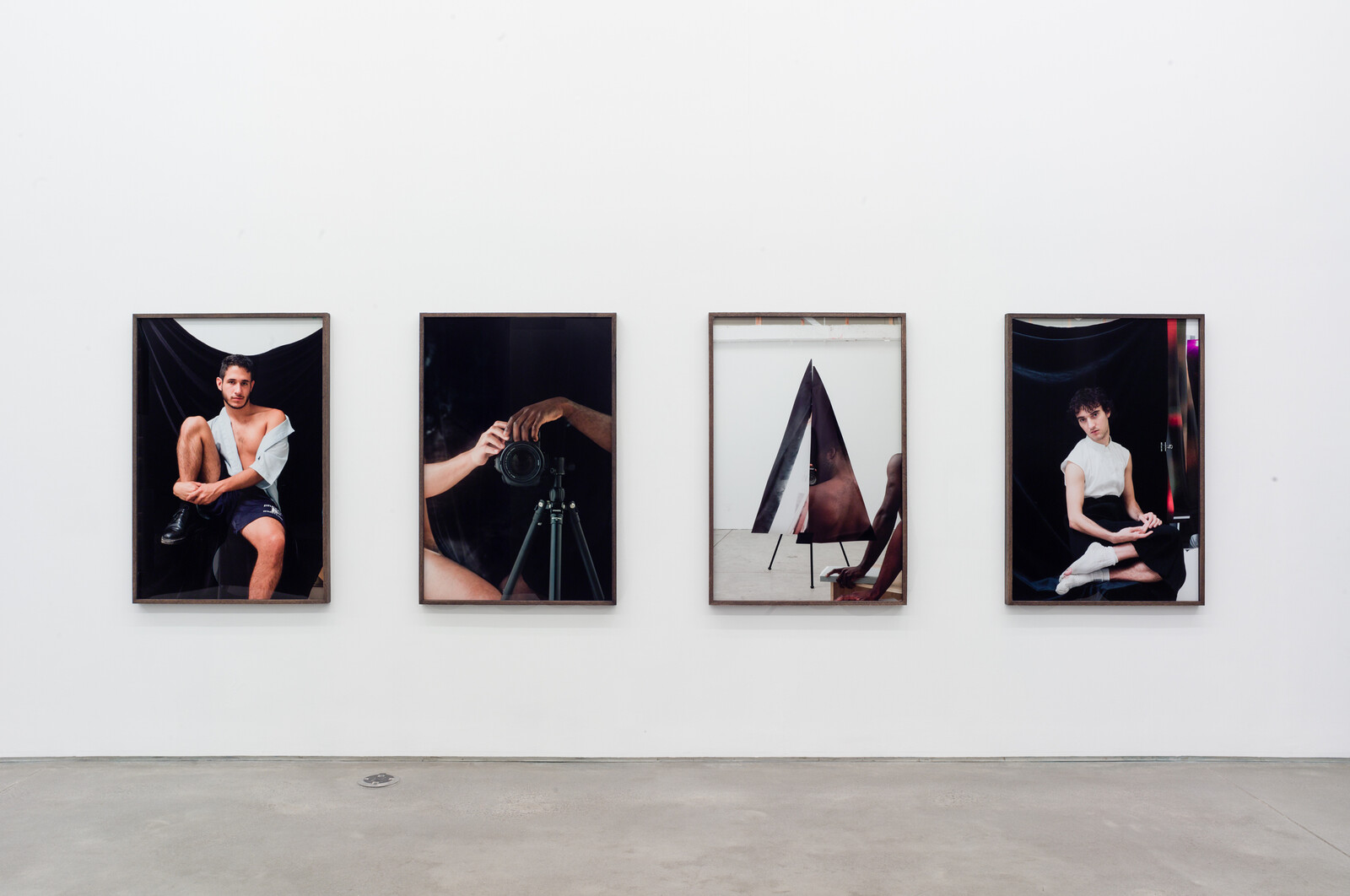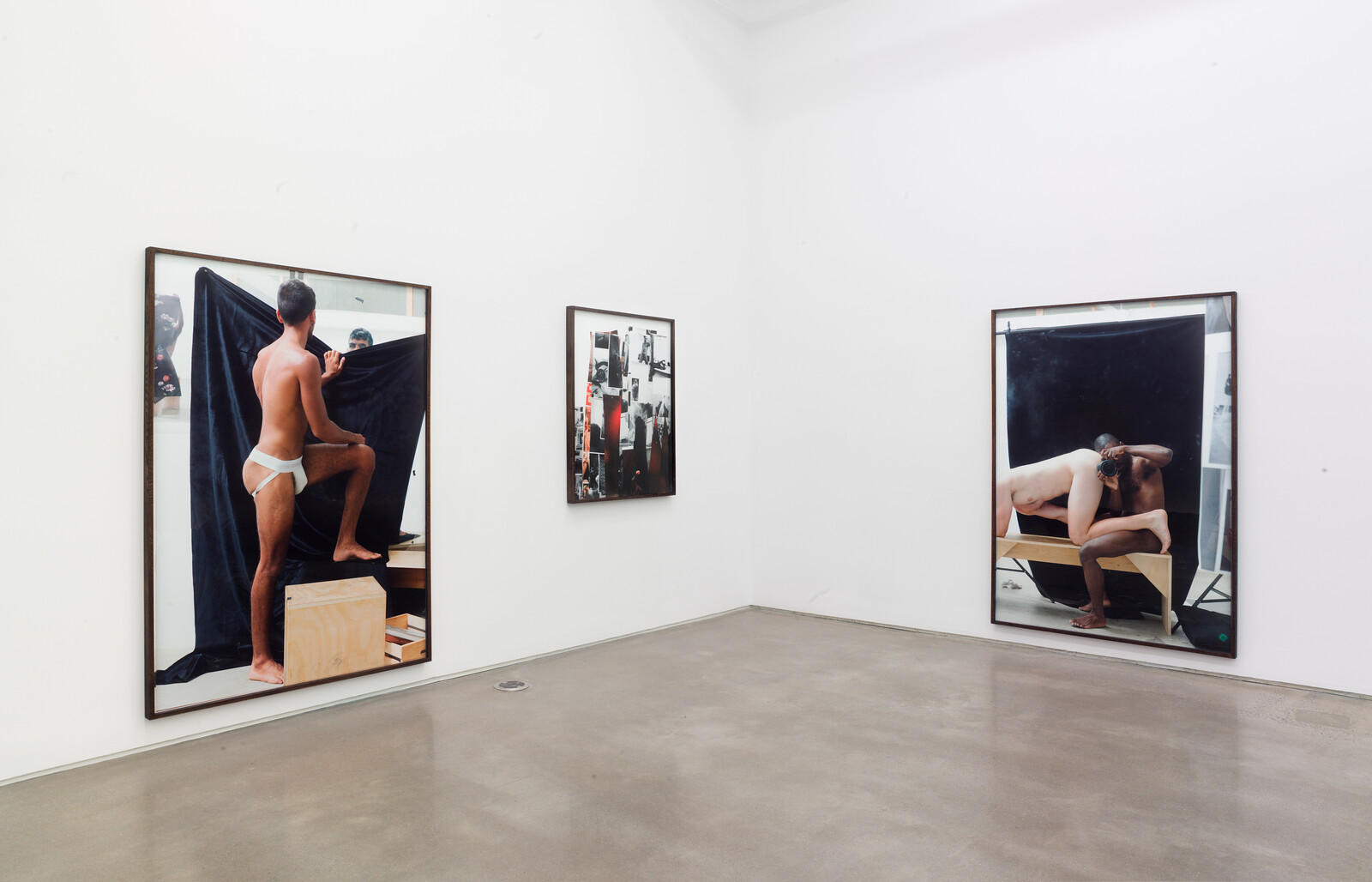A gaze without a frame might be a form of direct perception, or, in the digital age, unprocessed information. Frames are always accompanied by categories, which in turn bring their histories and memories along with them. In this sense, a gaze is only as powerful as the frames and categories, discourses and institutions that support it. When attached to an apparatus for seeing, a gaze becomes structural or systemic. It should also be remembered that a gaze, as feminist scholars and theorists of race have insisted, is an aperture that holds the potential to open onto physical violence.
This may seem a grim way to introduce Paul Mpagi Sepuya’s photographs, which attentively celebrate queer identities and relations. Yet what is most striking about Sepuya’s current exhibition, “The Conditions,” is how strongly it foregrounds the camera’s gaze and the studio as site of image-making. Using sets fashioned from wood, mirrors, and black velvet drapery, Sepuya constructs carefully composed photographs. These images feature his camera, parts of his body, and on one occasion—A Portrait (0X5A6109) (2017)—his entire figure reflected in mirrors.
This desire to oversee both sides of the gaze is crucial to Sepuya’s photographic practice, with its blending of portrait and self-portrait. A Portrait (0X5A8325) (2018) features an androgynous, curly-haired, white individual in a sleeveless white top, black skirt, and torn white socks seated sideways in front of a black curtain pulled back slightly with a binder clip. Behind this curtain and to its right are multihued vertical ribbons meant to highlight the manufactured nature of the image, which Sepuya creates in certain instances via a collage technique that involves photographing the reflections of other photographs of his. A reflected knee pokes into the lower, right-hand corner of the image, which, given Sepuya’s consistent inclusion of himself in his work, viewers might reasonably assume belongs to the photographer.
It would be too easy to say that Sepuya’s carefully created images are intended to illuminate the social construction of identity, race, and gender, although it is impossible not to see this. At the same time, these concerns are relayed via a playful, erotic agency and formal inventiveness. A complex interaction of black and white colors, patterns, and bodies has been a primary element in his art for more than a decade: in Darkroom Mirror (0X5A1812) (2017) a white hand and Sepuya’s darker-skinned hand reach around a black curtain to take the picture together. And while Sepuya entwines black and white throughout the exhibition, he also keeps them partly distinct in that his compositional decisions use black and white as contrasts along with joining them.
Intersecting this concern with race is sexual orientation and the production of queer spaces within the frame of the photograph. Here, too, Sepuya’s images direct attention to their collaged qualities, especially in the use of binder clips and pieces of tape, even if this constructed world can feel slightly tenuous, a bit precarious—as easily held together as taken apart. Such is the nature of many relationships. Studio (_1000021) (2018) is perhaps the most literal example of this with its image of tacked-up snapshots, pornographic photographs, and sliver of a self-portrait. A precise moment in time may exist ephemerally, but Sepuya’s larger body of work creates an alternate space, one that the viewer peers into but that also steadily peers back. An occasion for unidirectional voyeurism, or the unequivocal staging of positive representations, is not the goal here.
A series of six more opaque images installed in a horizontal row positions the camera as almost an extension of the body, and specifically the body as erotic object. One, in fact, is entitled Orifice (0X5A6982) (2018), and embeds the camera’s eye within a visually viscous brown surface. In Aperture (_2140020) (2018), this orifice has been solarized, or maybe it is the “solar anus” described by Georges Bataille: the sun that is also a night, a vision that must also remain partly hidden. Mirrors are messy and invariably distort, and Sepuya emphasizes this by leaving them slightly dirty—smudged, smeared, with visible fingerprints—before positioning them to photograph reflections and self-reflections. These visible surfaces imply touch nearly as much as looking.



%207577.jpg,1600)
%207860.jpg,1600)
%207584.jpg,1600)
%207858.jpg,1600)
%207525.jpg,1600)
%207586.jpg,1600)
%207676.jpg,1600)
%207588.jpg,1600)
.jpg,1600)
%207581.jpg,1600)
